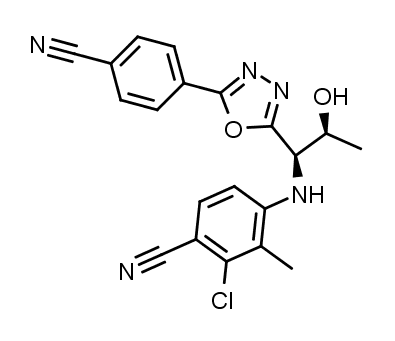Whether you’re an athlete pushing your body to its limits, a fitness enthusiast hitting the gym regularly, or someone who has suffered an injury, the road to recovery can often be a long and challenging journey. The process of healing and rehabilitation can be frustratingly slow, leading many to search for safe and effective ways to accelerate this process. Enter Selective Androgen Receptor Modulators, or SARMs, a revolutionary approach that may offer a promising solution to expedite injury recovery.
SARMs are a type of therapeutic compound that have garnered attention in the health and fitness industry. They are designed to mimic the effects of testosterone, but with a key difference. Unlike traditional anabolic steroids, SARMs target specific tissues in the body, potentially resulting in fewer side effects. With various types of SARMs, including MK677, Cardarine, LGD4033, SR9009, RAD140, and S4, they have become increasingly popular, particularly among those looking to accelerate their recovery process.
In this article, we will delve deeper into the world of SARMs and their role in injury recovery. We will explore how these compounds aid in healing and rehabilitation, the benefits they offer, and how to use them safely. We will also look at the evolution and significance of SARMs in the health and fitness industry, the scientific evidence supporting their use for injury recovery, and the role of different SARMs in accelerating the healing process. So, whether you’re new to SARMs or seeking to understand their potential benefits in injury recovery, this article is for you.
Table Of Contents
Don’t have time to read ‘SARMs and Injury Recovery: Accelerating Healing and Rehabilitation’? Here’s A Summary:
- SARMs (Selective Androgen Receptor Modulators) mimic the effects of testosterone and target specific tissues, potentially leading to fewer side effects.
- SARMs, including MK677, Cardarine, LGD4033, SR9009, RAD140, and S4, can accelerate injury recovery by increasing protein synthesis and muscle growth.
- They offer several benefits such as faster healing, maintaining muscle mass during inactivity, and reducing inflammation.
- Use of SARMs should be under the guidance of a medical professional or qualified health advisor.
- Research supports the use of SARMs for injury recovery and rehabilitation, but more studies are needed.
- Helixx Online, a Canadian company, provides high-quality SARMs.

SARMs and Injury Recovery: Accelerating Healing and Rehabilitation
Whether you’re an athlete or a fitness enthusiast, dealing with injuries is an inevitable part of the journey. The healing and rehabilitation process can be long and frustrating. However, a new age solution known as Selective Androgen Receptor Modulators, or SARMs, may offer a promising approach to accelerate injury recovery.
How SARMs Aid in Injury Recovery
One of the key benefits of SARMs lies in their ability to speed up injury recovery. SARMs work by binding to androgen receptors in our body. This triggers a series of actions, leading to increased protein synthesis and muscle growth. As a result, they can help in faster healing of injuries and more efficient rehabilitation.
Benefits of SARMs in Healing and Rehabilitation
When it comes to injury recovery, SARMs offer several advantages. They not only help in faster healing but also aid in maintaining muscle mass during periods of inactivity. Moreover, they may also help in reducing inflammation and pain, further facilitating the recovery process.

Scientific Evidence Supporting SARMs for Injury Recovery and Rehabilitation
Research into the use of SARMs for injury recovery and rehabilitation has provided encouraging results. Various studies highlight their potential to enhance muscle recovery, reduce inflammation, and improve bone health, which are all crucial aspects of injury rehabilitation.
A study published in the Journal of Pharmacology and Experimental Therapeutics found that RAD140, a widely used SARM, demonstrated an ability to increase muscle mass and bone mineral density in rats. This shows potential for RAD140 in aiding injury recovery and rehabilitation by enhancing muscle repair and promoting bone health.
Another study conducted by the Boston University School of Medicine found that LGD4033, another popular SARM, increased lean body mass and improved physical function in healthy men. This suggests that LGD4033 could be beneficial in maintaining muscle mass during periods of inactivity following an injury, thereby aiding in faster recovery and rehabilitation.
Research into Cardarine, yet another popular SARM, has also shown promising results. A study published in the Journal of Lipid Research found that Cardarine could reduce inflammation and improve metabolic health. This anti-inflammatory effect could potentially aid in reducing pain and inflammation associated with injuries, further facilitating the recovery process.
In conclusion, Selective Androgen Receptor Modulators, or SARMs, present a promising potential in the realm of injury recovery and rehabilitation. By mimicking the effects of testosterone and selectively targeting tissues, SARMs like MK677, Cardarine, LGD4033, SR9009, RAD140, and S4, hold the ability to accelerate the healing process, reduce inflammation, and maintain muscle mass.
Originally developed for therapeutic purposes, SARMs have evolved significantly over the years. Their potential benefits have been recognized by the health and fitness industry, leading to their growing popularity among athletes and bodybuilders. They have also proven to be instrumental in injury recovery and rehabilitation.
Scientific studies are ongoing to further understand the potential of SARMs and their role in injury recovery. These studies have shown promising results, highlighting the potential benefits of these compounds in speeding up recovery and aiding rehabilitation. However, it’s important to note that while SARMs can significantly aid in recovery, they should not replace proper rest, nutrition, and physiotherapy.


